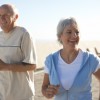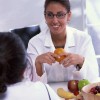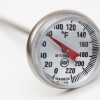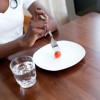 High blood pressure, also called hypertension, increases your health risks. If you have high blood pressure, you have a higher chance of getting heart disease or kidney disease or of having a stroke. This 4-page fact sheet was written by Linda B. Bobroff, and published by the UF Department of Family Youth and Community Sciences, October 2012.
High blood pressure, also called hypertension, increases your health risks. If you have high blood pressure, you have a higher chance of getting heart disease or kidney disease or of having a stroke. This 4-page fact sheet was written by Linda B. Bobroff, and published by the UF Department of Family Youth and Community Sciences, October 2012.
http://edis.ifas.ufl.edu/fy199
Tag: Family Youth and Community Sciences Department
Sleep Needs for Children (FAR0604/FM181)
 “Does your school-aged child complain about being sleepy during the day, doze off in class, or yawn a lot? Does he or she go to bed late or have trouble falling asleep? If so, your child may not be getting enough sleep.” This 2-page Family Album Radio transcript was written by Suzanna Smith, and published by the UF Department of Family Youth and Community Sciences, October 2012.
“Does your school-aged child complain about being sleepy during the day, doze off in class, or yawn a lot? Does he or she go to bed late or have trouble falling asleep? If so, your child may not be getting enough sleep.” This 2-page Family Album Radio transcript was written by Suzanna Smith, and published by the UF Department of Family Youth and Community Sciences, October 2012.
http://edis.ifas.ufl.edu/fm181
Cutting Costs to Live Within Your Income (FCS7009/HE153)
 Developing self-control of your spending is a basic step in cutting the cost of living. Some families are able to afford what they want, even on a limited income. This may result from having more experience or greater skills. You probably know specific things you could do to reduce spending. These suggestions may work for you. This 3-page fact sheet was written by Josephine Turner, Michael S. Gutter, and Nayda I. Torres, and published by the UF Department of Family Youth and Community Sciences, October 2012.
Developing self-control of your spending is a basic step in cutting the cost of living. Some families are able to afford what they want, even on a limited income. This may result from having more experience or greater skills. You probably know specific things you could do to reduce spending. These suggestions may work for you. This 3-page fact sheet was written by Josephine Turner, Michael S. Gutter, and Nayda I. Torres, and published by the UF Department of Family Youth and Community Sciences, October 2012.
http://edis.ifas.ufl.edu/he153
Are You Marrying Someone from a Different Culture or Religion? (FCS2321/FY1337)
 It was the author Paul Sweeney who penned, “A wedding anniversary is the celebration of love, trust, partnership, tolerance, and tenacity. The order varies for any given year.” Couples must make many adjustments as they learn to live with each other from year to year. When those adjustments include negotiating culture or religion, it adds another dimension to the process of trying to strengthen the relationship. This 7-page fact sheet was written by Stephanie C. Toelle and Victor W. Harris, and published by the UF Department of Family Youth and Community Sciences, September 2012.
It was the author Paul Sweeney who penned, “A wedding anniversary is the celebration of love, trust, partnership, tolerance, and tenacity. The order varies for any given year.” Couples must make many adjustments as they learn to live with each other from year to year. When those adjustments include negotiating culture or religion, it adds another dimension to the process of trying to strengthen the relationship. This 7-page fact sheet was written by Stephanie C. Toelle and Victor W. Harris, and published by the UF Department of Family Youth and Community Sciences, September 2012.
http://edis.ifas.ufl.edu/fy1337
Healthy Living: Beating Barriers to Physical Activity (FCS8818/FY883)
 Being active can help you function better and maintain your independence. It also can reduce your risk for getting some diseases, such as diabetes, and help you manage health problems you may already have. If you’re not active, what’s stopping you from getting started? Read on to learn how to overcome some common barriers! This 2-page fact sheet was written by Jennifer Hillan and Linda B. Bobroff, and published by the UF Department of Family Youth and Community Sciences, September 2012.
Being active can help you function better and maintain your independence. It also can reduce your risk for getting some diseases, such as diabetes, and help you manage health problems you may already have. If you’re not active, what’s stopping you from getting started? Read on to learn how to overcome some common barriers! This 2-page fact sheet was written by Jennifer Hillan and Linda B. Bobroff, and published by the UF Department of Family Youth and Community Sciences, September 2012.
http://edis.ifas.ufl.edu/fy883
What Do You See? Healthy Dating That Leads to Healthy Marriage (FCS2322/FY1338)
 Albert Einstein offered this perspective on dating and romantic relationships: “Any man who can drive safely while kissing a pretty girl is simply not giving the kiss the attention it deserves.” Dating relationships are the building blocks for healthy marriage relationships. To give them “the attention they deserve,” use different perspectives to help see why healthy dating can lead to healthy marriages or why unhealthy dating can lead to unhealthy marriages and divorce. This 4-page fact sheet was written by Victor W. Harris and Ginny Hinton, and published by the UF Department of Family Youth and Community Sciences, September 2012.
Albert Einstein offered this perspective on dating and romantic relationships: “Any man who can drive safely while kissing a pretty girl is simply not giving the kiss the attention it deserves.” Dating relationships are the building blocks for healthy marriage relationships. To give them “the attention they deserve,” use different perspectives to help see why healthy dating can lead to healthy marriages or why unhealthy dating can lead to unhealthy marriages and divorce. This 4-page fact sheet was written by Victor W. Harris and Ginny Hinton, and published by the UF Department of Family Youth and Community Sciences, September 2012.
http://edis.ifas.ufl.edu/fy1338
Healthy Eating: Folate (FCS8560/FY055)
 Folate is one of the B vitamins. Our bodies use folate to make new cells. Folate is especially important for women of childbearing age, pregnant and nursing women, growing children, and older people. If you don’t get enough folate in your diet, you could get anemia. You also could be at higher risk for heart disease, stroke, cancer, or memory problems. This 1-page large print fact sheet was written by Linda B. Bobroff, and published by the UF Department of Family Youth and Community Sciences, September 2012.
Folate is one of the B vitamins. Our bodies use folate to make new cells. Folate is especially important for women of childbearing age, pregnant and nursing women, growing children, and older people. If you don’t get enough folate in your diet, you could get anemia. You also could be at higher risk for heart disease, stroke, cancer, or memory problems. This 1-page large print fact sheet was written by Linda B. Bobroff, and published by the UF Department of Family Youth and Community Sciences, September 2012.
http://edis.ifas.ufl.edu/fy055
MyPyramid for Kids (FAR8047/FM356)
 “In 2005, MyPyramid for Kids was launched with the positive slogan ‘Eat Right. Exercise. Have Fun.’ This new resource, targeting children ages six to eleven, is an excellent tool to help children improve their food and activity choices.” This 2-page Family Album Radio transcript was written by Ariadna M. Rodriguez and Linda Bobroff, and published by the UF Department of Family Youth and Community Sciences, August 2012.
“In 2005, MyPyramid for Kids was launched with the positive slogan ‘Eat Right. Exercise. Have Fun.’ This new resource, targeting children ages six to eleven, is an excellent tool to help children improve their food and activity choices.” This 2-page Family Album Radio transcript was written by Ariadna M. Rodriguez and Linda Bobroff, and published by the UF Department of Family Youth and Community Sciences, August 2012.
http://edis.ifas.ufl.edu/fm356
The Effects of Caffeine on Lactation (FAR0423/FM354)
 “Human milk is the preferred food for infants, with exceptional physiological benefits not only for the baby but for the mother as well. Mothers need to be aware, though, that many substances that they consume are excreted in breast milk and can profoundly affect the composition and adequacy of her breastmilk. Even caffeine, which many of us consume on a daily basis in our coffee, tea, cola drinks and chocolate, finds its way into breast milk.” This 2-page Family Album Radio transcript was written by Ashley Orynich and Linda Bobroff, and published by the UF Department of Family Youth and Community Sciences, August 2012.
“Human milk is the preferred food for infants, with exceptional physiological benefits not only for the baby but for the mother as well. Mothers need to be aware, though, that many substances that they consume are excreted in breast milk and can profoundly affect the composition and adequacy of her breastmilk. Even caffeine, which many of us consume on a daily basis in our coffee, tea, cola drinks and chocolate, finds its way into breast milk.” This 2-page Family Album Radio transcript was written by Ashley Orynich and Linda Bobroff, and published by the UF Department of Family Youth and Community Sciences, August 2012.
http://edis.ifas.ufl.edu/fm354
Renter’s Insurance (FAR5007/FM382)
 “Whether you’re a family living in a rental house or apartment, or a parent whose children are in a rental situation, one of the costs that people tend to forget or ignore is renter’s insurance. But according to consumer science researchers, everyone renting an apartment or a house should have renter’s insurance. It will protect you and your family against losses from disasters such as hurricanes and fire.” This 2-page Family Album Radio transcript was written by Mary Harrison and Donna Davis, and published by the UF Department of Family Youth and Community Sciences, August 2012.
“Whether you’re a family living in a rental house or apartment, or a parent whose children are in a rental situation, one of the costs that people tend to forget or ignore is renter’s insurance. But according to consumer science researchers, everyone renting an apartment or a house should have renter’s insurance. It will protect you and your family against losses from disasters such as hurricanes and fire.” This 2-page Family Album Radio transcript was written by Mary Harrison and Donna Davis, and published by the UF Department of Family Youth and Community Sciences, August 2012.
http://edis.ifas.ufl.edu/fm382
Registration and Licensure of Nutrition Professionals in Florida (FCS8765/FY690)
 Registration and licensure of nutrition professionals exist to protect the public from people who are not qualified to practice as nutrition professionals, just as licensure of physicians protects the public from people who are not qualified to practice medicine. This 3-page fact sheet provides information about dietetic registration (a national credential) and licensure (a state-specific license). Florida has three credentials that allow people to legally practice as a nutrition or dietetics professional: Registered Dietitian (RD), Licensed Dietitian/Nutritionist (LD/N), and Licensed Nutrition Counselor (LNC). Written by Linda B. Bobroff, and published by the UF Department of Family Youth and Community Sciences, September 2012.
Registration and licensure of nutrition professionals exist to protect the public from people who are not qualified to practice as nutrition professionals, just as licensure of physicians protects the public from people who are not qualified to practice medicine. This 3-page fact sheet provides information about dietetic registration (a national credential) and licensure (a state-specific license). Florida has three credentials that allow people to legally practice as a nutrition or dietetics professional: Registered Dietitian (RD), Licensed Dietitian/Nutritionist (LD/N), and Licensed Nutrition Counselor (LNC). Written by Linda B. Bobroff, and published by the UF Department of Family Youth and Community Sciences, September 2012.
http://edis.ifas.ufl.edu/fy690
Nutrition for Health and Fitness: Fiber in Your Diet (FCS8130/HE697)
 Fiber has many names, such as dietary fiber, total fiber, or just plain fiber. Eating foods that contain fiber is good for your health. This 6-page fact sheet provides tips on how to include foods with fiber in your diet. Written by Linda B. Bobroff, and published by the UF Department of Family Youth and Community Sciences, September 2012.
Fiber has many names, such as dietary fiber, total fiber, or just plain fiber. Eating foods that contain fiber is good for your health. This 6-page fact sheet provides tips on how to include foods with fiber in your diet. Written by Linda B. Bobroff, and published by the UF Department of Family Youth and Community Sciences, September 2012.
http://edis.ifas.ufl.edu/he697
Keeping Food Safe: Choosing and Using Food Thermometers in Homes (FCS1083/HE770)
 Proper cooking of foods to safe internal temperatures is one of the most effective ways to prevent foodborne illnesses. Several types of food thermometers are available for purchase, and choosing the right one when cooking at home will help to keep food safe for your family. This 3-page fact sheet provides specific information on how to use different thermometers in different foods. Written by Claudia L. Peñuela, Amy Simonne, and Isabel Valentin-Oquendo, and published by the UF Department of Family Youth and Community Sciences, March 2012. http://edis.ifas.ufl.edu/he770
Proper cooking of foods to safe internal temperatures is one of the most effective ways to prevent foodborne illnesses. Several types of food thermometers are available for purchase, and choosing the right one when cooking at home will help to keep food safe for your family. This 3-page fact sheet provides specific information on how to use different thermometers in different foods. Written by Claudia L. Peñuela, Amy Simonne, and Isabel Valentin-Oquendo, and published by the UF Department of Family Youth and Community Sciences, March 2012. http://edis.ifas.ufl.edu/he770
Warning Signs of Anorexia (FAR8055/FM373)
 “With concerns about childhood obesity on the rise, the plight of young people with eating disorders such as anorexia nervosa may not be on many people’s minds. However, according to the American Academy of Child and Adolescent Psychiatry, between 5 and 10 million people, including 1% of American teens, have an eating disorder. Anorexia nervosa, an eating disorder characterized by excessive weight loss and severely distorted body image, is one of the most common psychiatric diagnoses in young women.” This 2-page Family Album Radio transcript was written by Jacqueline Endaya and Linda Bobroff, and published by the UF Department of Family Youth and Community Sciences, August 2012.
“With concerns about childhood obesity on the rise, the plight of young people with eating disorders such as anorexia nervosa may not be on many people’s minds. However, according to the American Academy of Child and Adolescent Psychiatry, between 5 and 10 million people, including 1% of American teens, have an eating disorder. Anorexia nervosa, an eating disorder characterized by excessive weight loss and severely distorted body image, is one of the most common psychiatric diagnoses in young women.” This 2-page Family Album Radio transcript was written by Jacqueline Endaya and Linda Bobroff, and published by the UF Department of Family Youth and Community Sciences, August 2012.
http://edis.ifas.ufl.edu/fm373
Protecting Your Family from Unintentional Poisoning (FAR5002/FM366)
 “In 2004, more than 2.4 million exposures to human toxins were reported to poison control centers in the United States. Almost all of them occurred in homes, and 85% percent of poison exposures were unintentional. More than half of them involved children under six years old. As a parent, that is a very frightening statistic.” This 2-page Family Album Radio transcript was written by Donna Davis, and published by the UF Department of Family Youth and Community Sciences, August 2012.
“In 2004, more than 2.4 million exposures to human toxins were reported to poison control centers in the United States. Almost all of them occurred in homes, and 85% percent of poison exposures were unintentional. More than half of them involved children under six years old. As a parent, that is a very frightening statistic.” This 2-page Family Album Radio transcript was written by Donna Davis, and published by the UF Department of Family Youth and Community Sciences, August 2012.
http://edis.ifas.ufl.edu/fm366
Enviroshopping for Teens (FCS8756/FY342)
 Every day, we make choices that impact our environment. This 3-page fact sheet will help you make environmentally friendly choices whenever you make purchases and encourage you to take a second look at items before throwing them away. Written by Linda B. Bobroff and R. Elaine Turner, and published by the UF Department of Family Youth and Community Sciences, September 2012.
Every day, we make choices that impact our environment. This 3-page fact sheet will help you make environmentally friendly choices whenever you make purchases and encourage you to take a second look at items before throwing them away. Written by Linda B. Bobroff and R. Elaine Turner, and published by the UF Department of Family Youth and Community Sciences, September 2012.
http://edis.ifas.ufl.edu/fy342
Mantener los alimentos seguros: Escoger y usar termometros en casa (FCS1083Span/FY1296)
 “La cocción apropiada de los alimentos a la temperatura interna segura es una de las formas más efectivas de prevenir las enfermedades transmitidas por los alimentos. Existe una gran variedad de termómetros para comprar y seleccionar el correcto para cuando cocine en casa de manera que usted y su familia estén seguros. Esta publicación proveerá información específica de cómo usar los diferentes termómetros en diferentes alimentos.” This 3-page fact sheet was written by Claudia Peñuela, Amarat Simonne e Isabel Valentin-Oquendo, and published by the UF Department of Family Youth and Community Sciences, September 2012.
“La cocción apropiada de los alimentos a la temperatura interna segura es una de las formas más efectivas de prevenir las enfermedades transmitidas por los alimentos. Existe una gran variedad de termómetros para comprar y seleccionar el correcto para cuando cocine en casa de manera que usted y su familia estén seguros. Esta publicación proveerá información específica de cómo usar los diferentes termómetros en diferentes alimentos.” This 3-page fact sheet was written by Claudia Peñuela, Amarat Simonne e Isabel Valentin-Oquendo, and published by the UF Department of Family Youth and Community Sciences, September 2012.
http://edis.ifas.ufl.edu/fy1296
Teen Binge Drinking (FAR1201/FM362)
 “Raising teenagers is a tough job. I know I’m not the only mom who worries about the challenges our children face, including the issue of teenage drinking. There are many reasons to be concerned: Youth who use alcohol are at greater risk for unprotected sexual intercourse, coerced sexual activity, use of marijuana, and poor academic performance.” This 2-page Family Album Radio transcript was written by Suzanna Smith and published by the UF Department of Family Youth and Community Sciences, August 2012.
“Raising teenagers is a tough job. I know I’m not the only mom who worries about the challenges our children face, including the issue of teenage drinking. There are many reasons to be concerned: Youth who use alcohol are at greater risk for unprotected sexual intercourse, coerced sexual activity, use of marijuana, and poor academic performance.” This 2-page Family Album Radio transcript was written by Suzanna Smith and published by the UF Department of Family Youth and Community Sciences, August 2012.
http://edis.ifas.ufl.edu/fm362
The Effect of Hospitalization on Older Couples (FAR3034/FM361)
 “Very often the tale is told of an elderly couple for whom the loss of one spouse is more than the other can bear—and the other partner dies relatively soon thereafter. Referred to as the bereavement effect, this phenomenon has been well studied and documented. Likewise, research has explored the weighty effect that a spouse’s illness has on the caregiving partner, also called caregiver burden. Studies have shown that declines in physical and mental health of a spouse are often linked to a decrease in their partner’s health.” This 2-page Family Album Radio transcript was written by Donna Davis, and published by the UF Department of Family Youth and Community Sciences, August 2012.
“Very often the tale is told of an elderly couple for whom the loss of one spouse is more than the other can bear—and the other partner dies relatively soon thereafter. Referred to as the bereavement effect, this phenomenon has been well studied and documented. Likewise, research has explored the weighty effect that a spouse’s illness has on the caregiving partner, also called caregiver burden. Studies have shown that declines in physical and mental health of a spouse are often linked to a decrease in their partner’s health.” This 2-page Family Album Radio transcript was written by Donna Davis, and published by the UF Department of Family Youth and Community Sciences, August 2012.
http://edis.ifas.ufl.edu/fm361
Does Divorce Make People Happy? (FAR4006/FM315)
 “The marriage and divorce trends of the “modern” American family have been studied for decades. In an attempt to further understand the outcomes of divorce, a team of family scholars headed by University of Chicago sociologist Linda Waite studied whether unhappily married adults who divorced were any happier than unhappily married people who stayed married.” This 2-page fact sheet was written by Donna Davis, and published by the UF Department of Family Youth and Community Sciences, August 2012.
“The marriage and divorce trends of the “modern” American family have been studied for decades. In an attempt to further understand the outcomes of divorce, a team of family scholars headed by University of Chicago sociologist Linda Waite studied whether unhappily married adults who divorced were any happier than unhappily married people who stayed married.” This 2-page fact sheet was written by Donna Davis, and published by the UF Department of Family Youth and Community Sciences, August 2012.
http://edis.ifas.ufl.edu/fm315